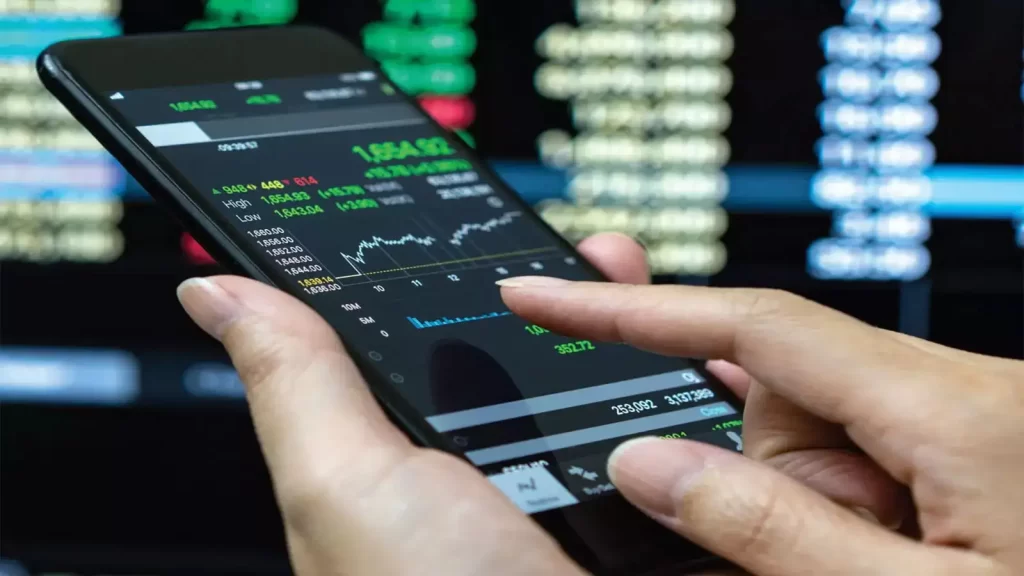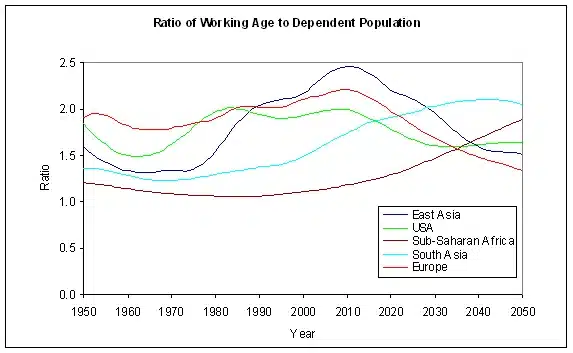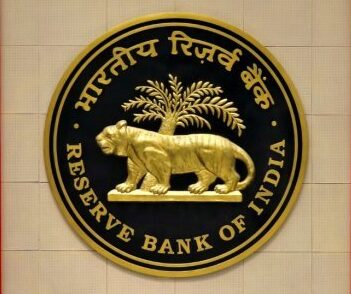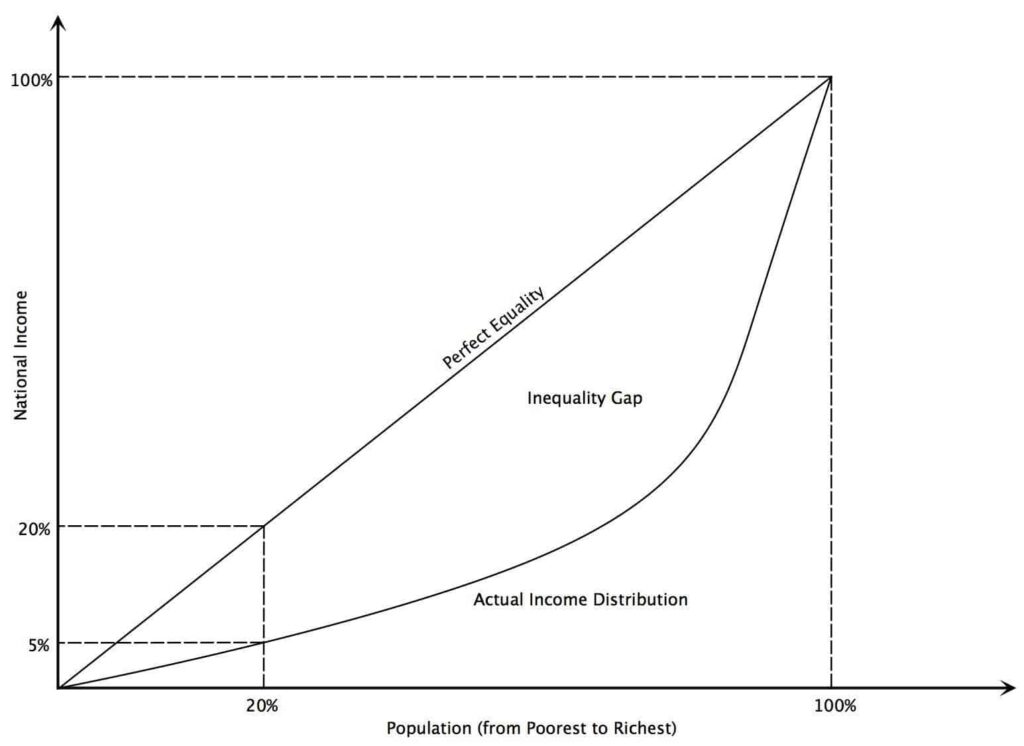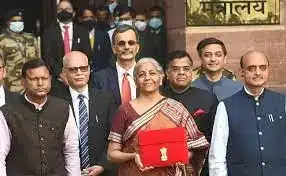Inflation can be described as the general rise in the price of goods and services in an economy over time. Unchecked inflation can ruin the whole economy. There are many examples from African and South American economies which got shattered by the high inflation rates. India experienced its highest inflation rate of 34.68 per cent in September of 1974. And the lowest rate touched -11.31 per cent in May 1976.
How to measure Inflation rate?
Inflation can be measured at three levels – producer, wholesaler and retailer (consumer). Prices generally rise in each level till the commodity finally reach the hand of consumer.
- Inflation at Producer Level
- As of now in India, there is no index to measure inflation at producer level. A Producer Price Index (PPI) is proposed, but so far this type of inflation calculation has not started in India.
- Inflation at Wholesale Level
- This is the most popular inflation rate calculation methodology in India. The index used to calculated wholesale inflation is known as Wholesale Price Index (WPI). This inflation rate is often known as headline inflation. WPI is released by the Ministry of Commerce and Industry.
- Inflation at Retail Level (Consumer Level)
- Consumer often directly buys from retailer. So the inflation experienced at retail shops is the actual reflection of the price rise in the country. It also shows the cost of living better.
The CPI and WPI are the terms that everyone comes across quite often and it leaves them quite confused about what exactly they stand for. So, let us have a quick look at what the CPI and WPI are?
A. Wholesale Price Index (WPI)
The Wholesale Price Index represents the price of a basket of wholesale goods. WPI focuses on the price of goods that are traded between corporations. It does not concentrate on goods purchased by the consumers. The Indian Wholesale Price Index (WPI) was first published in 1902.
- The main objective of WPI is monitoring price drifts that reflect demand and supply in manufacturing, construction and industry.
- WPI helps in assessing macroeconomic as well as microeconomic conditions of an economy.
- Wholesale Price Index, or WPI, measures the changes in the prices of goods sold and traded in bulk by wholesale businesses to other businesses.
- Analysts use the numbers to track the supply and demand dynamics in industry, manufacturing and construction.
- The numbers are released by the Economic Advisor in the Ministry of Commerce and Industry.
- An upward surge in the WPI print indicates inflationary pressure in the economy and vice versa.
- The quantum of rise in the WPI month-after-month is used to measure the level of wholesale inflation in the economy.
New series of WPI
- With an aim to align the index with the base year of other important economic indicators such as GDP and IIP, the base year was updated to 2011-12 from 2004-05 for the new series of Wholesale Price Index (WPI), effective from April 2017.
Major components of WPI
- Primary articles are a major component of WPI, further subdivided into Food Articles and Non-Food Articles.
- Food Articles include items such as Cereals, Paddy, Wheat, Pulses, Vegetables, Fruits, Milk, Eggs, Meat & Fish, etc.
- Non-Food Articles include Oil Seeds, Minerals and Crude Petroleum
- The next major basket in WPI is Fuel & Power, which tracks price movements in Petrol, Diesel and LPG
- The biggest basket is Manufactured Goods. It spans across a variety of manufactured products such as Textiles, Apparels, Paper, Chemicals, Plastic, Cement, Metals, and more.
- Manufactured Goods basket also includes manufactured food products such as Sugar, Tobacco Products, Vegetable and Animal Oils, and Fats.
How do you calculate Wholesale Price Index?
- The monthly WPI number shows the average price changes of goods usually expressed in ratios or percentages.
- The index is based on the wholesale prices of a few relevant commodities
- The commodities are chosen based on their significance in the region. These represent different strata of the economy and are expected to provide a comprehensive WPI value.
- The advanced base year 2011-12 adopted recently uses 697 items.
Problem/limitation
- One of the major limitations of WPI is that it does not include services such as the health, IT, Education, transport etc.
- Another problem with the WPI is that it does not account for the products of the unorganized sector in India, which constitutes about 35% of the manufactured output of the Indian economy.
Weightage in WPI
- Manufacturing products: 97%
- Primary and food articles:12%
- Fuel and electricity: 91%
- The weights are assigned on the basis of wholesale transaction (value of quantities) for respective commodity groups for WPI. For other indices, the weights are assigned on the basis of consumer expenditure survey.
- Though RBI used WPI for most of its policy decisions before 2014. But WPI based inflation calculation was not false proof. WPI shows the combined price of a commodity basket comprising 676 items. But WPI does not include services, and it neither reflect the bottlenecks between producer and wholesaler nor between wholesaler and retailer (consumer).
- Hence from 2014, as part of the reforms initiated by RBI governor Raghu Ram Rajan, RBI shifted to CPI for policy decisions.
B. Consumer Price Index
- CPI is a comprehensive measure used for estimation of price changes in a basket of goods and services representative of consumption expenditure in an economy.
- The CPI is based on retail prices and this index is used to calculate the Dearness Allowance (DA) for government employees.
- The index assigns different weights to various goods and services in the basket and tracks the movement of their prices.
- It also tracks the price movement of the entire basket on a pan-India level to calculate the overall inflation figure or CPI inflation.
- There are only few countries that use WPI while more than 150 countries use CPI as an indicator of price change.
- While CPI is the most relevant index for the consumer as it shows the increase in their actual outgo, it is not a completely accurate cost of living indicator since it focuses on certain goods and services more than others.
- The weightage of food in the CPI is close to 50%, but most households don’t spend nearly that much of their overall expenditure on food. What we spend more on are services such as education, health care and transportation, where inflation levels are much higher.
Who maintains Consumer Price Index in India?
- The National Statistical Office (NSO), Ministry of Statistics and Programme Implementation (MoSPI) is releasing All India Consumer Price Index (CPI) on Base 2012=100.
In India, there are four consumer price index numbers, which are calculated, and these are as follows:
CPI for Industrial Workers (IW)
- The new series of CPI-IW with base 2016 has replaced the existing series with base 2001.
- The CPI-IW is mainly used for determining dearness allowance (DA) paid to central/state government employees and workers in the industrial sectors besides measuring inflation in retail prices, fixation and revision of minimum wages in scheduled employments.
- When the Pay Commissions recommend pay revisions, the base is the CPI (IW).
- CPI-IW is compiled and maintained by the Labour Bureau, an attached office of the Ministry of Labour & Employment.
CPI for Agricultural Labourers (AL)
- The Consumer Price Index for Agricultural Labourers (CPI-AL) has 1986-87 as its base year with 260 commodities in its basket.
- The data is collected in 600 villages with a monthly frequency and has three weeks’ time lag.
- This index is used for revising minimum wages for agricultural labourers in different states.
- Compiled and released by the Labour Bureau in the Ministry of Labour.
CPI for Rural Labourers (RL)
- There is yet another Consumer Price Index for the Rural Labourers (CPI-RL) with 1984-85 as the base year, data is collected at 600 villages on monthly frequency with three weeks’ time lag, and its basket contains 260 commodities.
- Compiled and released by the Labour Bureau in the Ministry of Labour.
CPI for Urban Non-Manual Employees (UNME).
- This index depicts the changes in the level of average retail prices of goods and services consumed by the urban segment of the population.
- The target group of this index was urban families who derived major portion of their income from non-manual occupations in the non-agricultural sector.
- This index had a limited use as it was used for determining dearness allowances of employees of some foreign companies working in India in service sectors such as airlines, communications, banking, insurance and other financial services.
- Ministry of Statistics and Program Implementation collects CPI (UNME) data and compiles it.
How does Consumer Price Index help?
- The Reserve Bank of India and other statistical agencies study CPI so as to understand the price change of various commodities and keep a tab on inflation. CPI is also a helpful pointer in understanding the real value of wages, salaries and pensions, the purchasing power of a country’s currency; and regulating prices.
- Economists are in charge of collecting data by surveying households on their buying patterns, most purchased items, and daily expenses.
Changes in methodology of measuring inflation
- In 2011-12, Government announced a new set of the consumer price indices—CPI-R for the rural market, CPI-U for the urban market, and by combining them a ‘national’ CPI. The national consumer price index is called CPI-C (where ‘C’ stands for Combined).
- In order to make them more robust, the CPIs were further revised in 2015 by incorporating the following changes:
- The base year has been changed from 2010=100 to 2012=100.
- The basket of items and their weighing diagrams have been prepared using the Modified Mixed Reference Period (MMRP) data of Consumer Expenditure Survey (CES), 2011– 12, of the 68th Round of National Sample Survey (NSS).
- The number of Groups, which was five in the old series, has now been increased to six.
- ‘Pan, tobacco and intoxicants’, which was a Sub-group under the group ‘Food, beverages and tobacco’, has now been made as a separate group. Accordingly, the group ‘Food, beverages and tobacco’ has been changed to ‘Food and beverages’.
- Egg, which was part of the sub-group ‘Egg, fish and meat’ in the old series, has now been made as a separate sub-group. Accordingly, the earlier sub-group has been modified as ‘Meat and fish’.
- The elementary/item indices are now being computed using Geometric Mean (GM) of the Price Relatives of Current Prices with respect to Base Prices of different markets in consonance with the international practice. In the old series, Arithmetic Mean (AM) was used for that purpose. The advantage of using GM is that it moderates the volatility of the indices as GM is less affected by extreme values.
- Prices of PDS items under Antyodaya Anna Yojana (AAY) have also been included for compilation of indices of PDS items, in addition to Above Poverty Line (APL) and Below Poverty Line (BPL) prices being taken in the old series.
- Sample size for collection of house rent data for compilation of House Rent Index, which was 6,684 rented dwellings in the old series, has now been doubled to 13,368 rented dwellings in the revised series.
- Apart from All-India CPIs (Rural, Urban, Combined) for sub-group, group and general index (all-groups), which were released for the old series, all India Item CPIs (Combined) will also be available.
The Difference between WPI and CPI
There are two layers between the wholesale price and retail price, one is the additional cost of transportation from the wholesale to the point of sale, and the other is the retail mark-up. During the lockdown, for instance, it was more difficult to transport goods, and that additional cost got added to individual prices. Similarly, if there is scarcity, the retail margin goes up, adding to the price.
Another difference between the two indices is that the wholesale market is only for goods, you cannot buy services on a wholesale basis. So WPI does not include services, whereas the retail price index does. “The pricing norms of wholesale and retail are also different. Certain items on WPI, such as fuel, are also closely linked to international prices, creating a gap between the figures on this index and the CPI.
| Context | WPI | CPI |
| Definition | Amounts to the average change in prices of commodities at the wholesale level. | Indicates the average change in the prices of commodities at the retail level. |
| Publishing office | Office of Economic Advisor (Ministry of Commerce & Industry) | Central Statistics Office (Ministry of Statistics and Programme Implementation) & Labour Bureau |
| Commodities | Goods only | Goods and Services both |
| Inflation Measurement | First stage of a transaction | Final stage of a transaction |
| Prices paid by | Manufacturers and wholesalers | Consumers |
| Types of Commodities covered | Manufacturing inputs and intermediate goods like minerals, machinery basic metals, etc. | Education, communication, transportation, recreation, apparel, foods and beverages, housing and medical care |
| Base Year | 2011-12 | 2012 |
For more articles on economy, click here.
Also refer :


